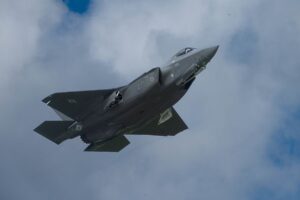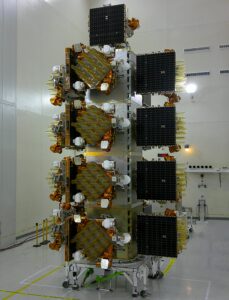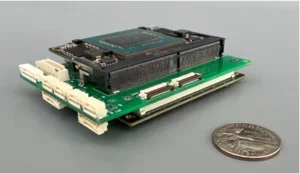Defense Daily
-
 Space
SpacePentagon Official Decries Cyber “Complacency”
RESTON, Va.–The new Netflix movie, House of Dynamite, concerning an unattributed nuclear weapons launch due to satellite missile warning failure and hacking of U.S. computer systems, “absolutely is reality, ladies […]
-
 International
InternationalAustal USA To Share 3D Printing Tech With Aussie Shipbuilder ASC
Austal USA on Monday announced a recent agreement with Australia’s government-owned Australian Submarine Corporation (ASC) to share its 3D printing and additive manufacturing technology in another move to aid Australia’s […]
Tagged in: -
 International
InternationalTrump Says U.S. Will Sell F-35s To Saudi Arabia
President Donald Trump on Monday said the U.S. will sell F-35 advanced fighter jets to Saudi Arabia. The confirmation comes a day ahead of Saudi Crown Prince Mohammed bin Salman’s […]
-
 Nuclear Modernization
Nuclear ModernizationDoE Spokesperson: Trump Not Scheduled To Meet With DoE, NNSA On Nuclear Testing
The Department of Energy told the Exchange Monitor Monday that, despite media outlets saying otherwise, President Donald Trump will not be meeting in the Oval Office with high-level nuclear weapons […]
-
 Business/Financial
Business/FinancialIonQ Confirms Deal To Acquire Optical Terminal Provider Skyloom
Quantum company IonQ [IONQ] is making another acquisition in the space industry with a deal to acquire optical communications company Skyloom Global. Optical communications will “form the backbone for quantum-secure communications […]
-
 Space
SpaceYork Space Systems Files To Go Public; Discloses $99 Million Loss In 2024
Space technology company York Space Systems on Monday filed a registration statement for a proposed initial public offering (IPO) that would take the 13-year-old private equity-backed company public. The pricing […]
-
 Business/Financial
Business/FinancialPalladyne AI Acquires Unmanned Systems, Manufacturing Companies To Form New Defense Unit
Palladyne AI [PDYN] on Monday said it is creating a new defense business that includes three new acquisitions and the defense variant of its autonomous pilot technology. The acquisitions include […]
-
 Space
SpacePentagon Moving To Implement Report By SDA Review Team, Including More Systems Engineering Focus To Reduce Concurrency
Pentagon acquisition chief Michael Duffey has approved the Space Development Agency’s Independent Review Team (SDA IRT) report, which team members signed off on in May–an approval that had been on […]
-
 Business/Financial
Business/FinancialCastelion Picks Site In New Mexico For Hypersonic Manufacturing
Castelion on Monday said it has selected a 1,000 acre site in New Mexico to be the startup’s first full-scale manufacturing campus for solid rocket motors and hypersonic weapons. Castelion […]
-
 International
InternationalU.S. OKs Potential $3.5 Billion Deal With Germany For Standard Missiles
The State Department said on Nov. 14 it has approved a potential $3.5 billion deal with Germany for the sale of Standard Missile 6 Block I and Standard Missile 2 […]
